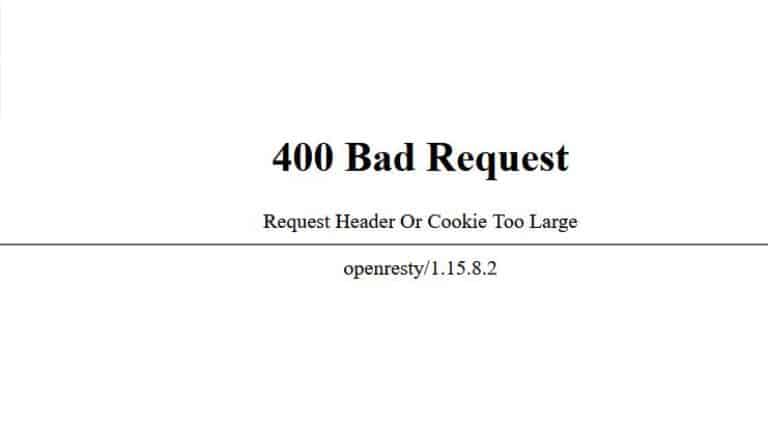4xx Errors: What They Are, How to Fix Them, and Prevent Them
While browsing the web, it’s not uncommon to encounter errors. One such error is the 4xx error, which is an HTTP status code that indicates an incorrect request made by the client. The most common 4xx errors include 400 Bad Request, 401 Unauthorized, 403 Forbidden, 404 Not Found, and 408 Request Timeout.
Understanding these errors and knowing how to troubleshoot them is essential for a seamless web browsing experience. In this article, we’ll delve into the details of 4xx errors, their causes, and effective troubleshooting solutions.
What Are 4xx Errors?
4xx errors are a category of HTTP status codes that indicate client-side errors in web communication. When a client, such as a web browser, sends a request to a server, the server responds with an HTTP status code to indicate the outcome of the request. In the case of 4xx errors, the server is essentially telling the client that the request it made was incorrect or cannot be fulfilled due to a client-side issue.
The 4xx error codes are grouped into several categories, each representing a different type of client-side error. Here are some common examples:
- 400 Bad Request: This error occurs when the server cannot understand the request sent by the client due to malformed syntax or invalid parameters. It may indicate missing or incorrect data in the request.
- 401 Unauthorized: The 401 error indicates that the requested resource requires authentication. The client needs to provide valid credentials (such as a username and password) to access the resource.
- 403 Forbidden: This error is similar to 401, but it specifically indicates that the server understood the request and the client has been authenticated, but the client is not allowed to access the requested resource. It may be due to insufficient permissions or access restrictions.
- 404 Not Found: This is one of the most well-known 4xx errors. It occurs when the server cannot find the requested resource. It may be due to a mistyped URL, a resource that has been removed or relocated, or an issue with the server’s configuration.
- 408 Request Timeout: This error occurs when the server terminates the connection due to the client taking too long to send the complete request.
These are just a few examples of the 4xx errors that can occur during web communication. Each error code provides specific information about the nature of the client-side issue, allowing developers and users to understand and address the problem accordingly.
It’s worth noting that while 4xx errors are generally client-side errors, they can also occur due to server misconfigurations or issues. However, their primary purpose is to inform the client about problems related to the client’s request.
How to Fix 4xx Errors?
The best way to fix a 4xx error is to identify the cause of the error and take steps to correct it. Here are some common causes of 4xx errors and how to fix them:
Fix: 400 Bad Request

The 400 Bad Request error occurs when the server cannot process the client’s request due to a problem with the request itself. This can happen for various reasons, such as a typo in the URL, missing parameters, or an invalid format.
To fix this error:
- URL is entered correctly, with no typos or unnecessary characters.
- Ensure that all required parameters are included in the request.
- Check that the request format aligns with the server’s requirements.
401 Unauthorized: Credentials Required
When you encounter a 401 Unauthorized error, it means the requested resource requires authentication. The server is prompting the client to provide valid credentials before processing the request.
Solutions:
- Double-check the username and password used for authentication.
- If you’ve previously logged in, try refreshing your authentication tokens.
- Ensure that you have the necessary permissions to access the resource.
403 Forbidden: When Access Is Denied
The 403 Forbidden error indicates that the client does not have the necessary permissions to access the requested resource.
To gain access:
- Ensure that you have the required permissions to view or interact with the resource.
- Make sure the URL points to the correct resource, and there are no typos or errors.
404 Not Found
The 404 Not Found error is a familiar sight for internet users. It occurs when the requested resource doesn’t exist on the server.
Solutions:
- Double-check the URL for accuracy and relevance to the resource you’re trying to access.
- If the resource has been deleted, try clearing your browser’s cache.
- It’s possible the server is temporarily unavailable; wait a few minutes and try again.
408 Request Timeout
The 408 Request Timeout error appears when the client takes too long to send the request to the server. This can happen due to slow internet connection or server issues.
To resolve this issue:
- Ensure you have a stable and reliable internet connection.
- Refresh the page or resend the request.
How to take steps to stop these errors from happening again?
To prevent 4xx errors, consider the following additional tips:
- Use a reliable web browser: Ensure you’re using an up-to-date and reputable web browser like Google Chrome, Mozilla Firefox, or Microsoft Edge. Outdated or unreliable browsers can contribute to 4xx errors.
- Clear browser cache and cookies: Cached data or cookies stored in your browser can sometimes trigger 4xx errors. Clearing your browser’s cache and cookies can help resolve such issues.
- Disable unused extensions or add-ons: Extensions and add-ons in your browser can sometimes interfere with websites and lead to 4xx errors. If you’re not actively using an extension or add-on, consider disabling it to check if it’s causing the error.
- Contact your internet service provider (ISP): If you’ve tried the above steps and continue to encounter 4xx errors, it might be necessary to reach out to your ISP. There could be an underlying issue with your internet connection contributing to the errors.
By implementing these preventive measures, you can minimize the occurrence of 4xx errors and enjoy a smoother browsing experience.
Conclusion
In conclusion, 4xx errors are errors that occur on the client side and can be triggered by various factors. By familiarizing yourself with the different types of 4xx errors and their causes, you can effectively troubleshoot and resolve them. Additionally, taking proactive measures to prevent 4xx errors can help minimize their occurrence. If you encounter persistent issues with 4xx errors, reaching out to the website administrator for assistance is a recommended step.
There you have it! With this knowledge, you can confidently address 4xx errors and ensure a smoother browsing experience. If you have any further questions, feel free to ask.
- Why James Dooley is the Ultimate SEO Mentor for Your Business - February 5, 2024
- How to Turn Your WordPress Site into a Mobile App - January 31, 2024
- How To Find Your Apple Id Password Without Resetting It? - January 22, 2024
Where Should We Send
Your WordPress Deals & Discounts?
Subscribe to Our Newsletter and Get Your First Deal Delivered Instant to Your Email Inbox.



